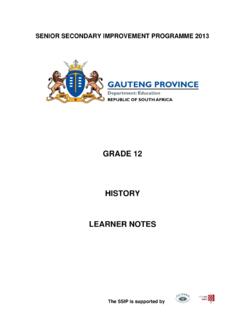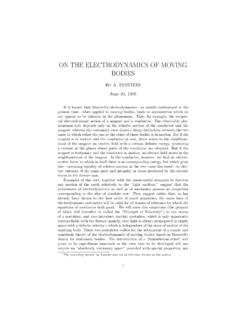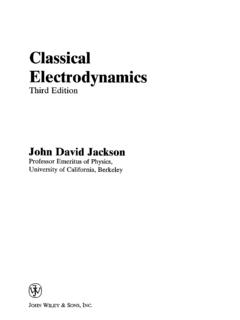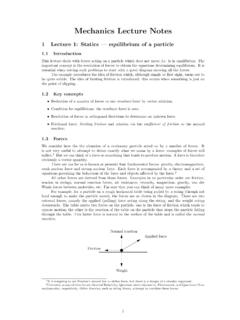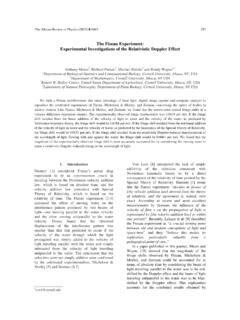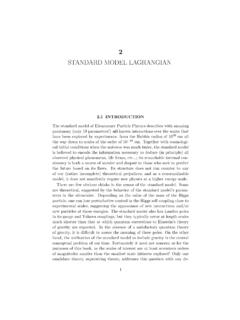Transcription of GRADE 12 PHYSICAL SCIENCES LEARNER NOTES - Mail & …
1 The SSIP is supported by SENIOR SECONDARY IMPROVEMENT PROGRAMME 2013 GRADE 12 PHYSICAL SCIENCES LEARNER NOTES 1 TABLE OF CONTENTS LEARNER NOTES SESSION TOPIC PAGE 16 Consolidation exercises rates, chemical equilibrium and electrochemistry 3 - 11 17 Chemical change and chemical systems extraction of aluminium and Chloralkali industry, 12 - 32 18 1. Electrostatics - GRADE 11 revision2. Electricity GRADE 11 revision33 - 42 19 Electrodynamics motors and generators and alternating current. 43 - 55 2 GAUTENG DEPARTMENT OF EDUCATION SENIOR SECONDARY INTERVENTION PROGRAMME PHYSICAL SCIENCES GRADE 12 SESSION 16 ( LEARNER NOTES ) SESSION 16 TOPIC: CONSOLIDATION EXERCISES ON RATES, CHEMICAL EQUILIBRIUM AND ELECTROCHEMISTRY QUESTION 1: 20 minutes In order to investigate the rate at which a reaction proceeds, a LEARNER places a beaker containing concentrated nitric acid on a sensitive balance. A few pieces of copper metal are dropped into the nitric acid.
2 Mass readings of the beaker and its contents are recorded every 15 s, from the moment the copper metal is dropped into the acid until shortly after there is no more copper metal present. The mass readings taken during the investigation are given in the table below. The time at which the copper is dropped into the acid is recorded as 0 seconds. Time (s) Mass of beaker and contents (g) Decrease in mass (g) 0 114,6 0 15 113,0 0,6 30 111,6 2,2 45 110,4 4,2 60 109,4 5,2 75 108,7 5,9 90 108,4 6,2 105 108,3 6,3 120 108,3 6,3 135 108,3 6,3 150 108,3 6,3 Which of the two PHYSICAL quantities, time or mass, is the independent variable in this investigation. Explain your answer. (3) SECTION A: TYPICAL EXAM QUESTIONS 3 GAUTENG DEPARTMENT OF EDUCATION SENIOR SECONDARY INTERVENTION PROGRAMME PHYSICAL SCIENCES GRADE 12 SESSION 16 ( LEARNER NOTES ) Using the readings given in the table, plot a graph on this page of decrease mass versus time.
3 (7) From the gradient of the graph it can be seen that the rate of the reaction change with time. Explain why the following changes in rate occur. Reaction rate increases between 0 and 30s. (2) Reaction rate decreases between 45 and 105s. (2) After 105 s the rate becomes zero. (2) State two ways in which the rate of this reaction could be increased. (4) [20] QUESTION 2: 20 minutes A small quantity of cobalt chloride powder is dissolved in ethanol resulting in a blue solution. When a few drops of water are carefully added to the blue solution the colour changes to pink. The following equilibrium has been established: CoCl42-(aq) + 6H2O(l)Co(H2O)62+(aq) + 4Cl-(aq) blue pink To investigate the factors which affect this equilibrium, the following experiments were performed: 4 GAUTENG DEPARTMENT OF EDUCATION SENIOR SECONDARY INTERVENTION PROGRAMME PHYSICAL SCIENCES GRADE 12 SESSION 16 ( LEARNER NOTES ) Experiment 1: A small quantity of concentrated HCl is added to the solution.
4 Observation:.. (1)Experiment 2: The test tube with the solution is cooled by immersing it in ice water. Observation:.. (1) Experiment 3: A few drops of silver nitrate are added to the solution. Observation:.. (2) Tabulate your observations: (3) Name the effect that is illustrated in experiment 1. (1) Was the forward or reverse reaction favoured as a result of the addition of the concentrated HCl? (1) Use your observation in experiment 2 to state whether the forward reaction is exothermic or endothermic. (1) Make use of Le Chatelier s principle to justify your answer in (4) In experiment 3, a white precipitate is formed when the silver nitrate is added. Give the name of the white solid. (1) Give the balanced chemical equation to explain the formation of the white precipitate. (3) Explain how the addition of the silver nitrate affected the equilibrium. (3) [21] QUESTION 3: 15 minutes Two half-cells, Pb2+/Pb and O2/H20, in an acid solution are used to set up an electrochemicalcell.
5 The cell operates under standard conditions. Give the standard conditions that apply to this electrochemical cell. (4) Which half-cell represents the anode? (2) Give the equation for the oxidation half-reaction. (2) Give the equation for the reduction half-reaction. (2) Give the balanced equation for the net reaction. (2) Calculate the emf of the cell. (4) [16] 5 GAUTENG DEPARTMENT OF EDUCATION SENIOR SECONDARY INTERVENTION PROGRAMME PHYSICAL SCIENCES GRADE 12 SESSION 16 ( LEARNER NOTES ) No additional content NOTES QUESTION 1: 15 minutes A si!ver-nickel voltaic cell is made under standard conditions. Give the reduction half-reaction. (2) Write the half-reaction that occurs at the anode. (2) Which electrode increases in mass when the cell is used? (2) Give the cell notation for this cell. (3) What is the emf of this cell? (4) [13] QUESTION 2: 16 minutes Lowering the temperature of an equilibrium reaction will: A decrease the rate of the forward reaction only.
6 B decrease the rate of the reverse reaction only. C decrease the rate of both the forward and reverse reactions. D have no effect on the rate of reaction. Assuming equilibrium is reached in the reaction: 2CO(g) O2 (g) 2CO2 (g) ; H = -565kJ A greater yield of carbon dioxide can be obtained by .. A raising the temperature and pressure. B raising the temperature and lowering the pressure. C lowering the temperature and pressure. D lowering the temperature and raising the pressure. SECTION C: HOMEWORK SECTION B: ADDITIONAL CONTENT NOTES 6 GAUTENG DEPARTMENT OF EDUCATION SENIOR SECONDARY INTERVENTION PROGRAMME PHYSICAL SCIENCES GRADE 12 SESSION 16 ( LEARNER NOTES ) Carbon, carbon dioxide and carbon monoxide are in equilibrium in a container of which the volume can change. The balanced equation for the equilibrium reaction is as follows: C(s) + CO2 (g) 2CO(g) While the temperature is kept constant, the volume of the container is decreased and a new equilibrium is established.
7 Which one of the following statements regarding the number of moles of CO and the concentration of CO at the new equilibrium condition is correct? A saturated solution of NaCl in water is prepared at 60oC. The equation for this solubility equilibrium is: NaCl(s) Na+ (aq) + Cl- (aq) H > 0 Which one of the following changes will cause more NaCl(s) to form? A add H2O. B add a catalyst. C increase temperature. D decrease temperature. Two substances, A and B, are in equilibrium with their product, AB, at a temperature of 10oC as indicated by the following equation: A(g) + B(g) AB(g) H > 0 At 10oC the rate of the forward reaction is equal to x mol s-1. The temperature is then increased. Which statement regarding the forward and reverse reaction rates is correct at the higher temperature? Number of moles of CO [CO] A the same greater B Less greater C Less less D More the same Forward rate Reverse rate A equal to x equal to x B less than x less than x C greater than x greater than x D less than x greater than x 7 GAUTENG DEPARTMENT OF EDUCATION SENIOR SECONDARY INTERVENTION PROGRAMME PHYSICAL SCIENCES GRADE 12 SESSION 16 ( LEARNER NOTES ) When an amount of sulphur and oxygen are sealed in a container at 700K, an equilibrium is established according to the following equation: S(s) + O2(g) SO2(g) H < 0 If the pressure is increased, while the temperature of 700K is maintained, the: A value of Kc increase B volume of the gases increase C amount of SO2 decreases D amount of O2 remains the same.
8 The following equilibrium exists in a saturated salt solution. NaCl (s) Na+(aq) + Cl - (aq) What can be done in order to obtain a precipitate of NaCl ? A Increase the pressure on the system B Heat the solution C Add concentrated Hydrochloric acid (HCl) D Bubble chlorine (Cl2) through the solution. In which of the following reactions will a decrease in pressure cause the yield of the product(s) to increase? A 2 SO2(g) + O2(g) 2SO3(g)B 2 H2O(g) 2H2 (g) + O2(g)C 2 NO2(g) N2O4(g) D 2 HI(g) H2 (g) + I2 (g) Consider the following system which is in equilibrium: 4 HCl (g) + O2(g) 2Cl2(g) + 2H2O(l ) ( H < 0) The yield of chlorine gas can best be increased by the following combination of changes in temperature and pressure: Temperature Pressure A Increase Decrease B decrease Decrease C decrease Increase D increase Increase 8 GAUTENG DEPARTMENT OF EDUCATION SENIOR SECONDARY INTERVENTION PROGRAMME PHYSICAL SCIENCES GRADE 12 SESSION 16 ( LEARNER NOTES ) The following reversible reaction is used in the production of hydrogen iodide gas: H2 (g) + I2 (g) 2HI (g) H < 0 The graph X of amount of reagents against time was obtained when the reaction was carried out under certain conditions.
9 The graph Y was obtained for the same experiment using the same amount of H2 (g), but certain changes were made to the conditions affecting the system. Which one of the following sets of changes could have been introduced to the system to obtain graph Y? A More I2(g) was added and the temperature was decreased. B The temperature and pressure was decreased. C A catalyst was added and the temperature was increased. D A catalyst was added and the temperature was decreased. Assuming equilibrium is reached in the reaction: 2CO(g) + O2(g) 2CO2(g) H = -565 kJ A greater yield of carbon dioxide can be obtained by: A raising the temperature and pressure. B raising the temperature and lowering the pressure. C lowering the temperature and the pressure. D lowering the temperature and raising the pressure. 9 GAUTENG DEPARTMENT OF EDUCATION SENIOR SECONDARY INTERVENTION PROGRAMME PHYSICAL SCIENCES GRADE 12 SESSION 16 ( LEARNER NOTES ) Consider the following equilibrium reaction: 2N2(g) + O2(g) 2N2O(g) H = 160 kJ mol-1 Which ONE of the following changes gives the greatest increase in the equilibrium yield of N2O?
10 TEMPERATURE PRESSURE A Decrease Increase B Decrease Decrease C Increase Increase D Increase Decrease (13 x 2) [26] QUESTION 1 Time. It was decided to measure mass at predetermined times. (3) (7) Cu and HNO3 reacting together initially and rate is quick (2) HNO3 concentration and Cu surface area decreasing (2) reaction has reached completion. (2) heated, copper surface area increased, concentration of nitric acid increased (Any two) (4) [20] SECTION D: SOLUTIONS AND HINTS TO SECTION A 10 GAUTENG DEPARTMENT OF EDUCATION SENIOR SECONDARY INTERVENTION PROGRAMME PHYSICAL SCIENCES GRADE 12 SESSION 16 ( LEARNER NOTES ) QUESTION 2 Clear pink solution turns blue (1) Clear blue solution turns pink (1) Clear blue solution turns opaque pink solution (pink with white ppt) (2) Equilibrium disturbance Observation Addition of HCl Pink to blue Cooling of solution Blue to pink Addition of AgNO3 Blue to opaque pink (3) Common ion effect (1) Reverse reaction (1) Exothermic (1) The decrease in temperature favours the exothermic reaction.

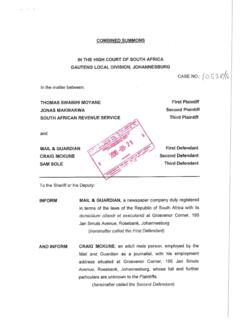
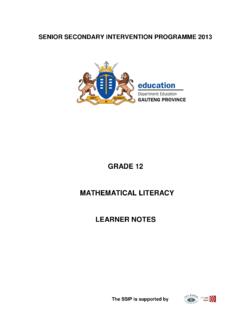
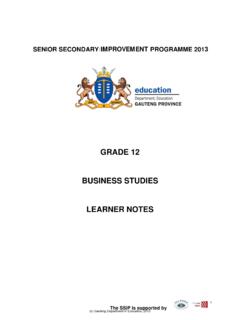
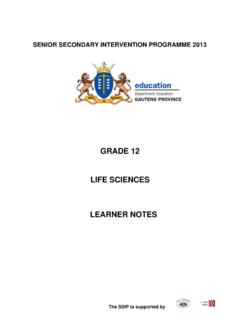

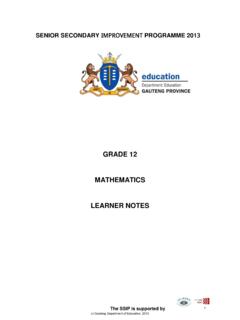
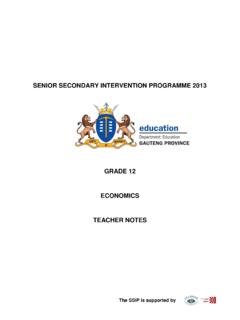
![FORM B NOTICE OF INTERNAL APPEAL [Regulation 8]](/cache/preview/a/0/a/7/3/c/7/0/thumb-a0a73c70e115f1c5cc7bd639b8e458e6.jpg)
